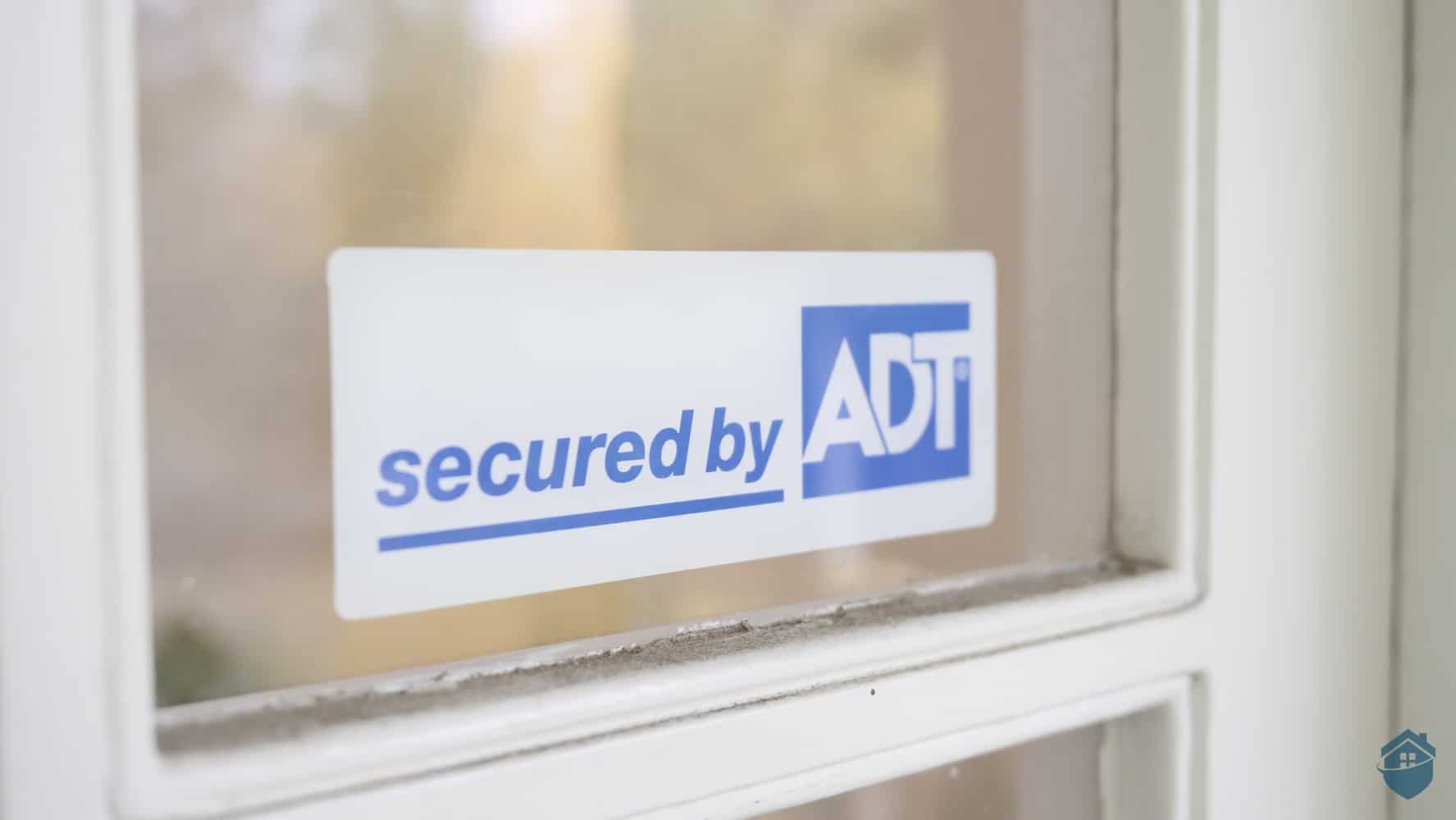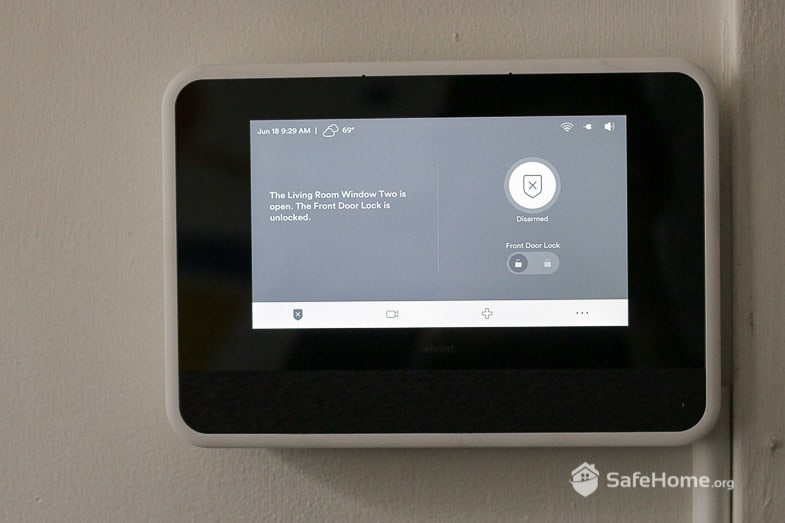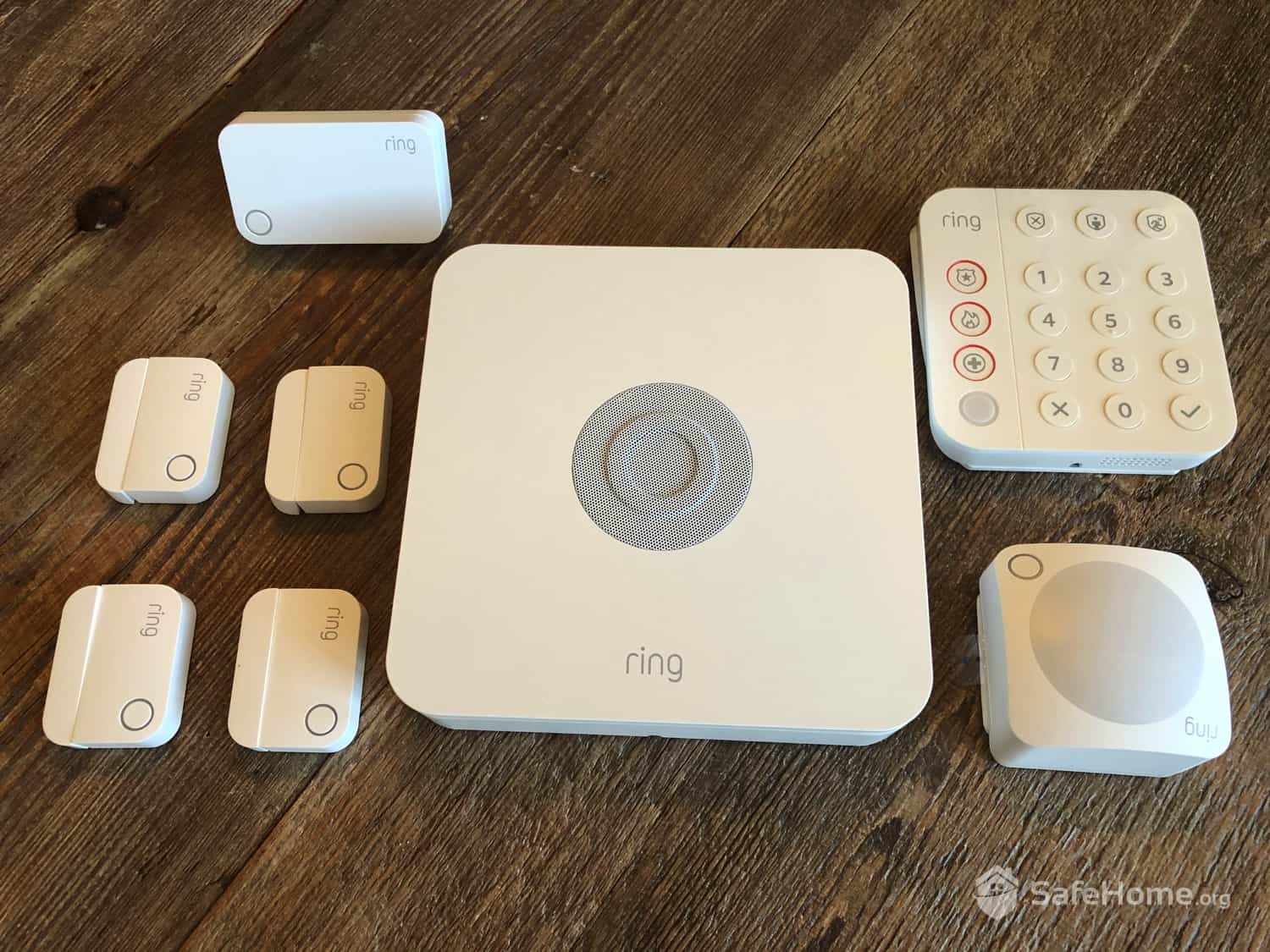You may not consider your home’s locks to be a weak point in your security posture. After all, a deadbolt is a deadbolt, right?Well, not quite.
They may make us feel safer, but traditional keys and locks are woefully outdated and vulnerable. That’s why many homeowners who are concerned with their physical security have opted to install smart locks on their entryways.
What exactly qualifies as a smart lock, though? How much do they cost, and how difficult are they to install? We’ll answer all those questions and more, starting with the most basic.
Did You Know? Contrary to popular belief (and movies), most burglars enter through the front door. That’s why we recommend installing a smart lock and a high-quality home security system like ADT or SimpliSafe.
What Is a Smart Lock?
Simply put, a smart lock is a connected device that replaces or augments your door’s traditional lock, adding an additional layer of security to your home. The devices can provide keyless entry and they are controlled in a number of ways, from your smartphone to your fingerprint.
Generally, though, the devices help secure your home and make things a little easier on you, the homeowner. Not only will they help thwart would-be intruders, but they’ll also make it easier to get in the back door while you’re carrying groceries.
And they’re not all that uncommon. Odds are you’ve already used a smart lock in your day-to-day life. Hotel rooms, office buildings, and most rental properties use some form of smart lock. Now that technology is available at home.
Pro Tip: Do you often forget your keys? A smart lock can make it so you don’t even need them anymore.
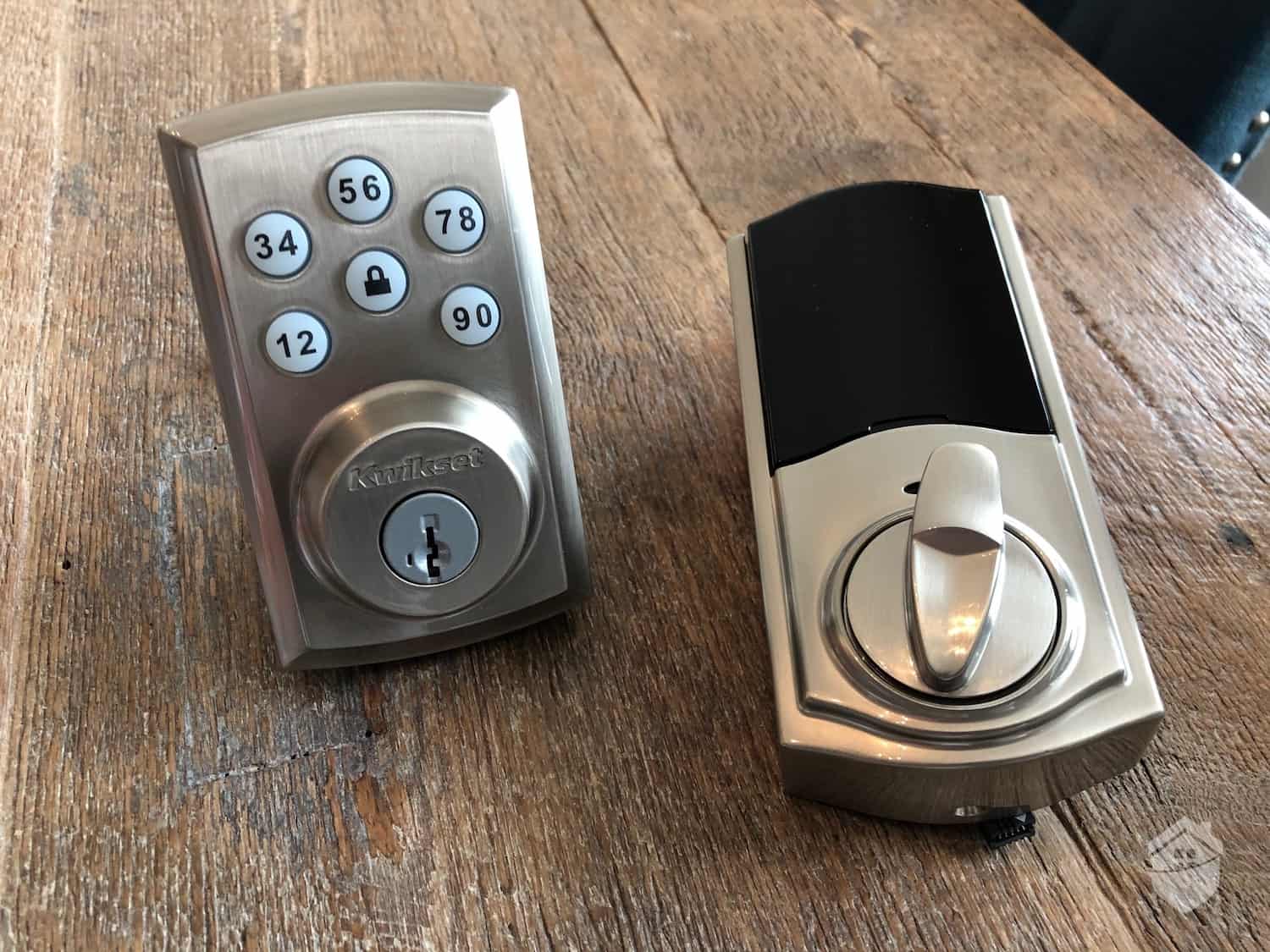
Vivint Smart Lock Options
What Are the Different Kinds of Smart Locks?
Different families have different needs, and there’s probably a lock on the market tailor made to all those needs. Let’s take a look at some of the most popular types of smart locks.
Bluetooth
These are probably the most versatile types of smart locks. They can trigger when they recognize a particular piece of equipment, such as a smartphone, is in the proximity. Multiple devices can be registered, and different parameters can be set for who can unlock the door and when.
Biometric
Biometric smart locks operate by scanning a physical part of a person’s body and using its characteristics to determine whether they are allowed entry. The most commonly used biometric parameter is a fingerprint, but more advanced locks can use retinal or iris recognition.
RFID
Similar to Bluetooth smart locks, RFID locks use radio frequencies to identify cards or fobs that are authorized to pass through a door. If you’ve ever worked in an office building, you’re probably familiar with this technology.
Wi-Fi
These smart locks are most commonly sold as parts of a security system kit, with a smart hub connected in your home. They’ll usually be controlled by the user’s smartphone and can easily track who is coming and going, so they’re great for big families.
Z-Wave
The main difference between Z-Wave connectivity and Wi-Fi is that it doesn’t connect directly to your mobile device. A Z-Wave connection uses a compatible smart home hub to communicate with a smart device’s signal, then turns the signal into a readable command your router understands. Once connected, you can access, monitor, and control your smart locks remotely from anywhere in the world. Z-Wave locks add a layer of security against hacking.
Keypad
Digital keypad locks work by setting a specific numeric code that must be entered before the door is unlocked. These are fairly common in rental properties, such as Airbnbs, where a code can be set for each guest and changed once they’re gone.
Now that you have a good idea of what smart locks are, let’s discuss how they’re used.
What Are the Uses of Smart Locks?
When it comes to smart locks, there are two main uses: security and convenience. The former is pretty well understood — they help keep the bad guys out. The latter, though, may be a little less clear until you’ve used one. Smart locks are one of those pieces of equipment you don’t know you need until you have it. Some of the value comes in the form of:
- Letting in the cleaners or babysitter remotely.
- Keeping kids out of areas of the house they shouldn’t be.
- Making sure everyone is at home when they said they would be.
- Opening the lock as you approach with heavy bags.
- Making sure the home is secure from your bed.
- Being able to lock the door you forgot about while you’re out to dinner.
- Letting guests in while you’re not there.
- Keeping your ex from returning once you’ve broken up.
That all sounds pretty neat, but we understand why some people may think smart locks are unnecessary. Let’s move on to a question that may be coming to mind right about now.
Do I Really Need a Smart Lock?
Short answer? No. You don’t need a smart lock. But no one needs a security system either. You want a security system to help protect your family and property from threats, and you want that security system to be comprehensive. That means considering how to strengthen it from all angles. One area that is often overlooked is entryways.
Pro Tip: Looking for a home security system that won’t break the bank? Check out our guide to the best affordable home security systems. You’ll find something for every need on a budget.
You may think if you remember to lock your doors when you leave you’ll be fine, but consider this: bump keys. Also known as rapping keys or 999 keys, these tools can provide anyone access to your home in a matter of seconds. Modern deadbolts aren’t all that complicated, and there are only about a dozen basic types on the market today. Without getting too technical about the art of defeating pin-and-tumbler locks, a criminal using a bump key that fits your keyway can mimic your house key and gain entry to your home with startling speed.
For every piece of security equipment — even technologically advanced pieces like smart locks — there is a method by which to defeat it. Let’s discuss some of the dangers of having a smart lock.
What Are the Dangers of Smart Locks?
Smart locks may seem impenetrable to the average person, but the simple fact is they can be defeated — the criminal just needs to know a thing or two about computers. Just like deadbolts can be picked by people who know what they’re doing, smart locks can be hacked by someone with specific know-how.
When you’re selecting a smart lock for your home, you should consider how it’s connected. Wi-Fi and Bluetooth connections are the most susceptible to hacking, but reputable companies will have countermeasures in place to make it more difficult for computer-savvy thieves to override your security measures. Also look into the history of the company. Has it had exposed security vulnerabilities in the past? If so, what has been done to rectify them?
Did You Know? Data leaks like the ones affecting smart lock security are a major concern for corporations and consumers alike, but they’re actually one of the largest vectors for identity theft. Security goes beyond just your home. If you’re interested in protecting your identity, too, check out our identity theft protection buyers guide.
Another danger of installing smart locks is that they may provide an overinflated sense of confidence. Most smart locks will do little to improve the physical security of the door you’re attaching it to. Even if you have a smart lock installed, a particularly brazen criminal may decide to kick in your door or pry it open with a crowbar.
We don’t say this to scare you, but instead to help you understand that no single piece of security equipment will keep you safe from all threats. Comprehensive security systems do not rely on one particular piece of equipment. Instead they are the culmination of multiple pieces of equipment with different functions working together to keep you safe. Smart locks are one part of a much bigger picture.
Now allow us to step down from our soap box to discuss something more concrete. How hard are these things to install and work with?
Are Smart Locks Difficult to Install?
When we’re talking about the installation process, there are two types of smart locks to consider: adapted smart door locks, which use your existing lock hardware to essentially add smart technology to your door, and native smart door locks, which require an entirely new lock to be installed.
Pro Tip: Back in the day, most security systems had to be professionally installed. Now there are tons of companies that offer simple, DIY solutions to protect your family and home. Check out our roundup of the best DIY security systems to learn more.
When it comes to DIY projects, adapted locks are a lot easier than native locks, but the latter usually produces more aesthetically pleasing results. Simply put, they just look better most of the time. If you’re not handy with power tools, many manufacturers of native smart locks offer professional installation. Just keep in mind you’ll have to pay a service fee.
If you’re working with a DIY brand that’s going to smarten up your existing hardware, you should probably set aside half an hour to an hour for installation. You may need a screwdriver or power drill, but not much beyond that. If you’re going for a native install, you may need a router, planer, and level — or just your checkbook.
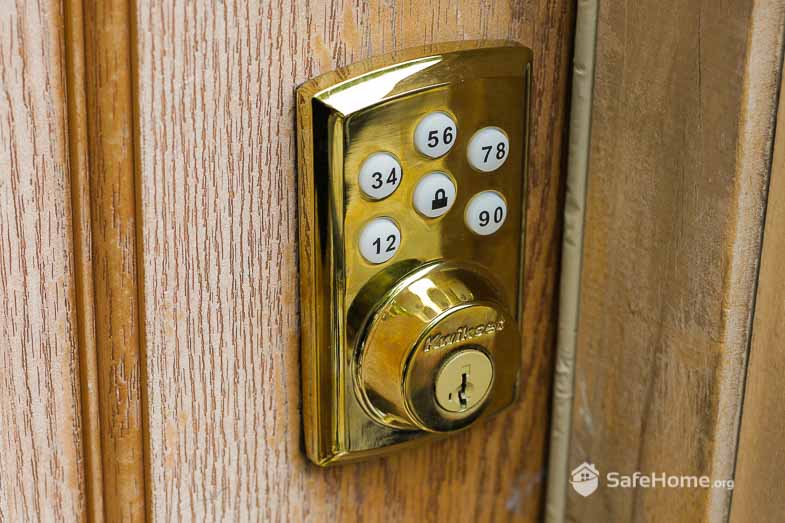
Vivint – Smart Door Lock
Where Can You Install Smart Locks?
Smart locks are, obviously, built for entryways. There are tons of different types of doors, however, and different locks are made for different applications.
Front and Back Doors
These are the most common places you’ll see smart locks installed, but you need to pay attention when you’re shopping around. Some smart locks come in right-hand or left-hand lever sets, and you’ll want to make sure you purchase one specifically rated for outdoor use.
Garage Doors
Some smart locks are made specifically for garage doors. They can have traditional, in-car openers that work using radio frequencies, or you can use proximity triggers such as Bluetooth or RFID. They can take the hassle out of getting out of your car to open the door every time you get home.
Interior Doors
Most people think about putting smart locks on their exterior doors or maybe their shed, but not a lot of folks know smart lock technology has come inside too. There are plenty of manufacturers that provide smart locks for indoor use only. They’re great for keeping your bedroom safe and secure at night or keeping your teenagers out of your man cave.
Sliding Doors
It wasn’t until recently that smart locks could be installed on existing sliding doors, which is unfortunate because they’re some of the easiest for criminals to break into. Lockly recently introduced its Guard model, which is specifically designed for existing sliding and swing-style doors without having to replace them.
Another thing to consider before buying a smart lock is the type of property you live in.
Smart Locks for Renters vs. Owners
If you’re a homeowner, there aren’t many considerations to take when installing a security system — particularly if it’s not going to be recording audio. You can run into trouble depending on your state’s consent laws, but that’s a discussion for another time. What we really want to talk about is installing a smart lock as a renter.
Pro Tip: If your landlord agrees to let you install anything significant — security equipment included — make sure you get it in writing. You don’t want to lose your security deposit!
You’ll need to discuss it with your property manager or landlord. They’ll have the final say in what you can and can't do, and may not be happy about the idea of installing a piece of equipment that prevents them from accessing their property. There are plenty of smart locks you can provide them access to that won’t affect existing hardware. You can even take it with you when you move out.
If their answer is “no,” that’s OK. There are still plenty of security systems for renters that you won’t need permission to install yourself.
Now that you have a grasp of all things smart lock, let’s talk about a pretty important consideration: the price.
How Much Are Smart Locks?
First off: How much are you looking to spend? The most basic models will run about $50, while the most advanced could cost thousands — especially if you’re talking about advanced biometric access technology. Most homeowners, though, should expect to spend between $100 and $300 per lock.
That’s a little pricey when you consider your doors probably already have deadbolts, but it makes more sense when you start thinking about your overall security posture.
Pro Tip: Make sure you assess your needs before you go shopping for home security equipment. It’s easy to get overwhelmed and buy equipment you don’t need.
When you’re taking a DIY approach to home security, it’s rare that you’ll purchase everything you need to make your home 100 percent safe and secure in one go. Consider your biggest needs first, and think about how you’ll get the biggest bang for your buck. Maybe smart locks are lower on the list than an alarm system or security cameras.
If you’re ready to buy, we should talk about some of the brand names you’ll see and some of their best features.
Who Makes Great Smart Locks?
We have more on this in our roundup of the best smart locks of 2023, but some of the most common brands you’ll find include:
- August
- Danalock
- Friday
- Igloohome
- Kwikset
- Lockitron
- Sesame
- Schlage
- Ultraloq
- Yale
All these brands have pros and cons. Some are great for outdoor use, while some are better for people on a budget. It will take some shopping around to find exactly what you need. We’ve compiled an at-a-glance chart of some of the most popular models from some of these brands to give you an idea where to start.
| Brand | Yale Assure | SoHoMill YL 99 | August Smart Lock 2nd Gen | Samsung SHS-P718 | Schlage Connect BE469NX | Haven Connect | Kwikset Kevo 2nd Gen |
|---|---|---|---|---|---|---|---|
| Price | $159.99 and up | $45 and up | $199 | $530 and up | $260 and up | $340 and up | $210 and up |
| Method of entry | Keypad, smart home app, key | Keypad | Smartphone, proximity, key | Keypad, RFID, fingerprint | Keypad, key | Bluetooth key fob or smartphone | Bluetooth, fob, key |
| App support | Yes | No | Yes | No | Yes | Yes | Yes |
| Pros | Works with Amazon Alexa when paired with a Wink or SmartThings Hub (sold separately). Can have 250 unique PIN codes to share with family and friends. Great customer satisfaction. | Low cost compared to alternatives. Very easy to install and set up. Master code, passage code, and up to 8 user codes. Auto locks after 3 seconds of opening. Very long battery life. | Voice control with Alexa and Assistant if purchased with August Connect hub. Works with your current deadlock. Auto locks the door when you leave and auto unlocks when you approach the door. Track when and who is opening doors through the app. | Multiple methods of secure entry. Push/pull entry. | Uses Z-wave technology allowing you to combine it with other smart home devices (with optional purchase of the hub). Highest residential security rating. Sends an alert when someone is tampering or trying to force entry. | Much stronger than a deadbolt, installs to the floor with a rising lock gate to prevent forced entry through the door. Backup battery to ensure working functionality when the main battery dies. Full app support. | Touch to open with your phone. Works with Amazon Alexa, Ring doorbell, and other smart home devices. Remotely lock doors and track who is locking or unlocking doors with the Kevo Plus Hub. |
| Cons | Requires an additional hub for full functionality. | Beeps every time you open the door. Cannot be disabled. Corrodes if exposed directly to the elements. No physical key entry option in case of battery failure. | Issues with Smart Lock not performing as expected. Reports of users being locked out of their house due to glitches in the app, and can be unlocked only with a physical key. | Not for exterior doors and not water resistant. Difficult to install. Very expensive. | Hard to find cons with this one. The only issue is if you want truly touchless entry rather than a keypad. | Must have enough door gap clearance at the bottom for this lock to install correctly. Expensive. | Several customer complaints of reliability issues and poor battery life. |
| Best for | Large households. Easily gain entry in three different ways. | Airbnb landlords and storage sheds. Easily grant access to renters, and change the code after each renter for easy access. | Techies who can take the time to ensure this lock will work perfectly. | Small businesses. You can have long-term employees use their fingerprint or keypad, while granting short-term contract workers a RFID card to get in and out securely. | Households and landlords. Easily grant access to family members or renters by providing them with a code. When you have new renters or guests, just change the code. | Households wanting extra protection against break-ins. The unique design of this door lock makes it extremely difficult to break through the door. | Households that want to maintain traditional-looking door locks but have smart lock capabilities. |
The chart should get you well on your way when you consider the features you're looking for and the price you want to pay.
By now you should have a pretty good idea of what you’re looking for in a smart lock. Let’s bring it home.
Are Smart Locks Worth It?
You’re the only one who will be able to answer that question. Some people feel safe and secure in a home with the doors unlocked all day. Other people want a perimeter of high-tech security cameras and motion sensors to ensure nothing suspicious is happening on their property 24 hours a day, seven days a week. Most people, though, are somewhere in between.
Pro Tip: Home security is an important preventive measure against intruders, but make sure you’re protected from disaster as well.
That’s likely where you’ll find yourself, so take a hard look at your home — where you live, the crime rates, how the property is set up, what the likely entry points are, and how secure you feel given your current setup. If someone wanted to break in, would they feel emboldened or would they reconsider? If someone did break in, is there anything in place to stop them?
Overall, smart locks are a good investment for people interested in adding a little extra security and convenience to their homes. They certainly add to the “wow” factor of your property if you can tell your Alexa to unlock the front door when guests show up, but they also add a very meaningful layer of functional protection.

